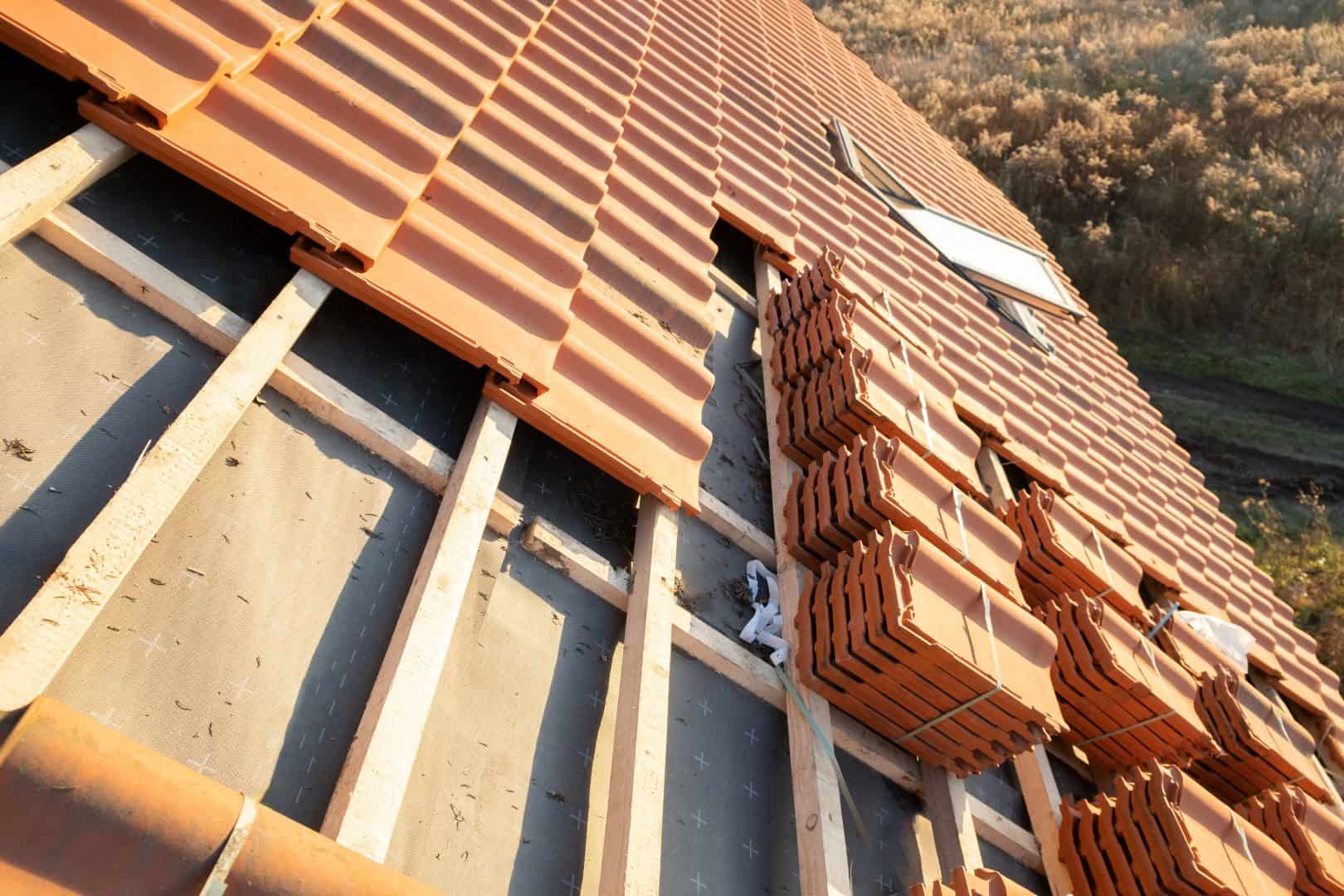Do I need planning permission for a new roof in Bury St Edmunds?
Fill Out The Form And We'll Get Back To You

With your home being one of your most significant investments, understanding whether planning permission is necessary for a new roof in Bury St Edmunds is crucial. You may be surprised to learn that not all roofing projects require approval, depending on factors such as the type of materials used and changes made to the structure. However, failing to seek permission when required can lead to fines or enforcement actions from the local council. This guide will help you navigate the complexities of roofing regulations in your area.
Understanding Planning Permission
The process of obtaining planning permission is a crucial aspect of any building project. It is designed to ensure that new developments are in line with local policies and regulations, helping maintain the character and environment of an area. Notably, in places like Bury St Edmunds, the appearance and integrity of your neighbourhood can significantly influence whether or not your plan is approved.
What is Planning Permission?
Permission is a legal requirement that you may need to obtain before commencing construction or alterations on your property. This process assesses the potential impacts of your proposed work on the surrounding area, as well as considering local development plans. Without securing the appropriate permissions, you run the risk of facing legal actions or being compelled to undo your work.
Types of Planning Applications
Types of planning applications can vary based on the scale and nature of your proposed project. Understanding these categories will help you ascertain which type you need to apply for in Bury St Edmunds. Here are the primary types of applications you might encounter:
| Application Type | Description |
| Full Planning Permission | Required for most new builds or extensive changes. |
| Outline Planning Permission | Shows intent for development without detailed plans. |
| Listed Building Consent | Necessary for any works on protected structures. |
| Certificate of Lawfulness | Confirms that a development does not require permission. |
| Prior Approval | Applies to specific changes under permitted development. |
Understanding the types of planning applications is important to ensure that your project complies with local regulations. Each category has its unique requirements and implications, which may affect the timeline and feasibility of your renovation or new build. Make sure you conduct thorough research and consult with local planning authorities to determine the most appropriate application for your needs.
- Full Planning Permission is crucial for significant projects.
- Outline Planning Permission helps gauge feasibility before detailed plans.
- Listed Building Consent protects heritage properties from unsuitable changes.
- Certificate of Lawfulness provides legal reassurance for minor works.
- Prior Approval streamlines certain development processes.
The determination of which type of planning application you require will directly influence the approval process and timeline for your project. Engaging with professional planning consultants or local authorities can ensure you navigate this landscape effectively. The application journey can ultimately achieve a successful outcome, protecting both your interests and the character of Bury St Edmunds.
Planning Permission for Roofs
You may be wondering whether you need planning permission for a new roof in Bury St Edmunds. The requirements can depend on several factors, including the type of roof you wish to install and its alterations. While some roofing projects might be exempt from permission, it is imperative to understand the rules surrounding planning permission to avoid potentiallegal issues. For a clearer perspective, you can read about Eight projects that don’t need planning permission.
When is Permission Required?
In the context of roofing projects, you will generally need planning permission if you are making significant changes that affect the overall structure or appearance of your home. This may include extensions or alterations that change the height or shape of your roof, or if you live in a conservation area where strict regulations apply. It is crucial to check if your property is listed or situated in a conservation area, as these factors can impose additional restrictions on your roofing work.
Permitted Development Rights
Any roofing projects that fall under the category of permitted development do not require planning permission, which can simplify your renovation plans. However, to qualify for these rights, your project must meet specific criteria regarding size, materials, and design. Typically, you can make minor alterations such as replacing tiles, repairing damage, or changing a flat roof to a pitched roof without needing to apply for permission.
The details surrounding permitted development rights are critical for homeowners looking to update or replace their roofs. It is imperative for you to confirm that your intended work adheres to the limits and conditions set out in the regulations; otherwise, you may inadvertently infringe on planning guidelines. Always consider consulting with local authorities or a professional to ensure you are fully informed before commencing any roofing project.
Local Regulations in Bury St Edmunds
While contemplating a new roof in Bury St Edmunds, it’s imperative to understand the local regulations that govern building projects. Regulations can vary significantly depending on the specific requirements of your property and its location. Local authorities enforce these regulations to maintain the character of the area and ensure safety. For further information, you can check the Planning – Frequently asked questions. Familiarising yourself with local guidelines will help you determine whether your roofing project requires planning permission.
Specific Regulations for Roof Modifications
Modifications to your roof may often require planning permission, especially if they significantly alter the property’s appearance or structure. Factors such as height, materials used, and the overall impact on neighbouring properties will contribute to the decision-making process. If your property is in a conservation area or has specific restrictions attached, these considerations become even more critical. It is advisable to consult directly with the planning authority to establish the exact requirements based on your property’s specifications.
Historical and Conservation Considerations
An important aspect of any roofing modifications is understanding the potential historical and conservation considerations that may apply. If your property is listed or situated in a conservation area, you must adhere to stricter planning regulations to preserve the historical integrity and character of the surroundings. This might involve using traditional materials or adhering to specific architectural styles in your renovation. Engaging with local conservation officers can provide invaluable guidance in ensuring your plans align with legal requirements.
Historical considerations are vital when dealing with listed buildings or properties within conservation areas. Altering a roof without considering its historical context can lead to potential legal repercussions and costly modifications later on. It’s crucial to be aware that even minor changes may be scrutinised, and maintaining the aesthetic and architectural significance of your property should be at the forefront of your planning process to avoid any harmful consequences.
How to Apply for Planning Permission
Application Process Overview
Not every roofing project requires planning permission, but if yours does, understanding the application process is crucial. You will need to submit a detailed application including any necessary architectural plans, specifications, and supporting documents. The process typically begins with a conversation with your local planning authority, who can guide you on whether your project needs permission and what information you will need to provide.
With your application, be prepared for some waiting time, as the decision period can take up to eight weeks. During this time, your submission may be reviewed by various stakeholders, including neighbours and relevant authorities. If you’ve followed the guidelines and submitted all necessary information, you stand a good chance of receiving approval in a timely manner.
Common Documentation Required
An effective application will generally require several important documents. Typically, you will need to include a completed application form, detailed drawings of your proposed roof design, and any other relevant information that could impact the approval process. In some cases, you may also need to provide a site plan and photographs of your existing property.
Understanding what documentation is necessary is crucial for a smooth application process. Some local councils may have specific requirements, so it is important to check with the planning authority in Bury St Edmunds for any additional specifics. The more comprehensive your submission, the less likely you will encounter delays or requests for additional information, making it critical to prepare everything thoroughly.
Potential Consequences of Unauthorized Work
All homeowners should be aware of the potential repercussions of undertaking unauthorized work, particularly regarding new roofing projects in Bury St Edmunds. If you proceed without the required planning permission, you may face significant legal and financial implications. Local authorities have the power to take enforcement actions against property owners who do not comply with planning regulations. This may involve issuing a planning enforcement notice, which could compel you to either modify or, in extreme cases, completely remove the unauthorised structure. Failure to adhere to such notices could result in further penalties and even the possibility of legal action.
Enforcement Actions
Potential enforcement actions can vary, but they generally begin with a formal complaint or observation from a member of the public or a council officer. Authorities typically investigate any claims and can initiate enforcement proceedings if they conclude that planning permission was required and not obtained. You may end up having to rectify your roofing work at your own expense, which can be a significant inconvenience and an additional financial burden.
Costs and Implications
One of the most pressing implications of undertaking roofing projects without planning permission is the potential costs involved. Not only could you face fines and legal fees, but you may also need to cover the costs of making your property compliant with local regulations. This could require hiring professionals to rectify any inadequacies in your work, which could be both time-consuming and financially draining. Given that improper roofing may lead to structural issues, the overall expense could escalate rapidly if the situation isn’t resolved promptly.
Another critical point to consider is that unauthorized work can affect your property’s value and marketability. Potential buyers may be deterred if they discover that you completed renovations without the necessary approvals, leading them to question other aspects of your home’s compliance. Furthermore, in extreme instances, you might have to deal with an order to restore your property to its original state, which can be disastrous both financially and in terms of your time. Understanding and complying with planning regulations is necessary to safeguard not just your investment, but your peace of mind.
Alternative Options
To consider viable alternatives to standard roofing projects, you should first explore the implications of various designs and materials. Some roofing solutions, such as lightweight structures or green roofs, may not require extensive planning permissions, making them appealing choices for homeowners keen on expediting their renovation plans. Additionally, consulting with local building regulations can clarify whether your innovative roofing ideas align with existing legislation, thus avoiding potential complications down the line.
Consultations and Advisory Services
For anyone commenceing on a roofing project, seeking advice from planning consultants or architectural professionals can be invaluable. Engaging with these experts allows you to gauge whether your designs could meet local guidelines and regulations, thus reducing the likelihood of encountering https://bingajax.com/ad-detail/21yb-tocagchberybsumgocedabulkin-476a!4q0.html obstacles during the planning stage. These consultations can also steer you towards suitable roofing options that might circumvent your need for formal permissions.
Exploring Roof Design Alternatives
One effective way to navigate the complexities of planning permissions is by exploring roof design alternatives that fulfil your aesthetic and functional needs without the bureaucratic intricacies. Consider options such as integral skylights or innovative shapes that can enhance your home’s appearance while potentially falling outside the remit of traditional regulations. Building a green roof or utilising lightweight materials could not only transform your space but also contribute positively to the environment.
For instance, incorporating a flat roof design or opting for a thatched roof may provide a distinctive flair to your home while often bypassing stringent planning requirements. These alternatives not only grant you creative freedom but also could yield financial savings and reduce environmental impact. Always ensure you check local regulations thoroughly, as some styles may still warrant differing levels of approval, even if they appear less conventional.
Final Words
Conclusively, whether you require planning permission for a new roof in Bury St Edmunds largely depends on several factors, including the materials you choose and the specific alterations you plan to undertake. If you are replacing an existing roof with similar materials and not altering the structure or height, you may fall under permitted development rights and not need planning permission. However, if your new roof involves significant changes, such as raising the height or creating a new roof terrace, you will likely need to apply for planning permission. It is important to thoroughly check local regulations, as these can vary widely even within different areas of the town.
Additionally, it is wise to consult with your local planning authority before commencing any work. They can provide you with detailed guidance specific to your situation, ensuring you understand what is required for your new roof project. By doing your due diligence and keeping abreast of local planning requirements, you can avoid potential complications and ensure a smooth process as you enhance your property with a new roof.
FAQ
Q: Do I need planning permission for a new roof in Bury St Edmunds?
A: Whether you need planning permission for a new roof in Bury St Edmunds largely depends on the specifics of your project. Generally, if you are replacing an existing roof with similar materials and structure, you may not require planning permission. However, if you plan to alter the roof shape, increase its height, or use materials that are significantly different, you will likely need to apply for permission. It is always best to consult the local planning authority to confirm the requirements for your specific situation.
Q: Are there any exceptions to the planning permission requirement for roofing works?
A: Yes, there are certain exceptions when it comes to planning permission for roofing works. If your property is a listed building or located in a conservation area, stricter regulations may apply. Additionally, if you are undertaking work that falls under ‘permitted development’ rights, such as minor repairs or alterations that do not significantly impact the property’s appearance, you may not need permission. Always check with the local council to clarify any exceptions that may apply to your circumstances.
Q: How can I find out if my proposed new roof requires planning permission?
A: To determine if your proposed new roof requires planning permission, you should first contact the planning department of Bury St Edmunds council. They can provide guidance on any planning regulations that are in effect for your property or area. You may also want to consult the official government planning portal, which offers a wealth of information on common planning queries. Additionally, hiring a professional architect or planning consultant can help navigate the process and ensure compliance with local regulations.
New Roof
The guys made a fantastic job of re-roofing our house. They were quick, courteous and excellent value for money.
Chimney Repair
We employed Wrights Roofs to repair our very old chimney – tht had seen better days. They carefully repaired, repointed and re-leaded our chimney which should last me out.
Solar Panel Installs
We had panels that needed putting onto our pitched roof. The guys from Wrights did a great job.
Roofs, Flat Roofs Chimneys and Solar Panels
If you need roof work on your home, please complete the form or call us today.

